While Alexey Navalny’s death commanded 24-hour news coverage, Gonzalo Lira’s death in Ukraine was virtually ignored. Alan MacLeod on why one death apparently mattered so much more to U.S. corporate media.
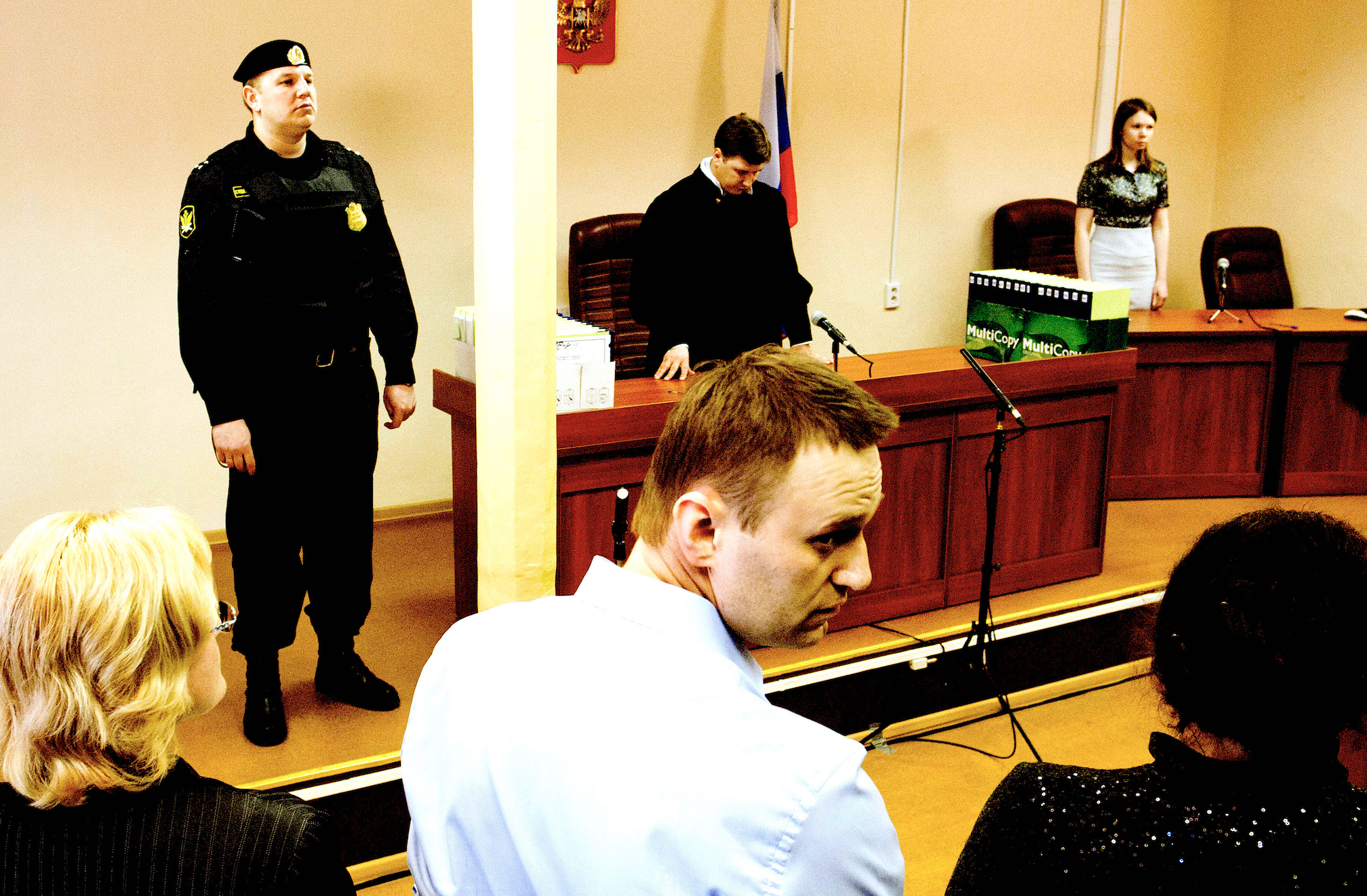
Alexey Navalny in court in 2013. (Evgeniy Feldman / Novaya Gazeta, Wikimedia Commons, CC BY-SA 3.0)
By Alan MacLeod
MintPress News
 MintPress conducted a quantitative analysis of the media coverage of the two political figures who recently died in prison: Alexey Navalny and Gonzalo Lira.
MintPress conducted a quantitative analysis of the media coverage of the two political figures who recently died in prison: Alexey Navalny and Gonzalo Lira.
Both were controversial characters and critics of the governments that imprisoned them. Both died under suspicious circumstances (their families both maintain they were effectively murdered). And both died in the past six weeks, Navalny in February and Lira in January.
A crucial difference in their stories, however, is that Navalny perished in an Arctic penal colony after being arrested in Russia (an enemy state), while Lira’s life ended in a Ukrainian prison, abandoned by the pro-Kiev government in Washington, D.C.
The study compared the coverage of Navalny and Lira’s death in five leading outlets: The New York Times, The Washington Post, ABC News, Fox News and CNN over six days. These outlets were chosen for their reach and influence and, together, could be said to reasonably represent the corporate media spectrum as a whole.
The data was compiled using the Dow Jones Factiva news database and searches on the websites of the news organizations. This study takes no position on the matter of Navalny, Lira or the Russia-Ukraine war.
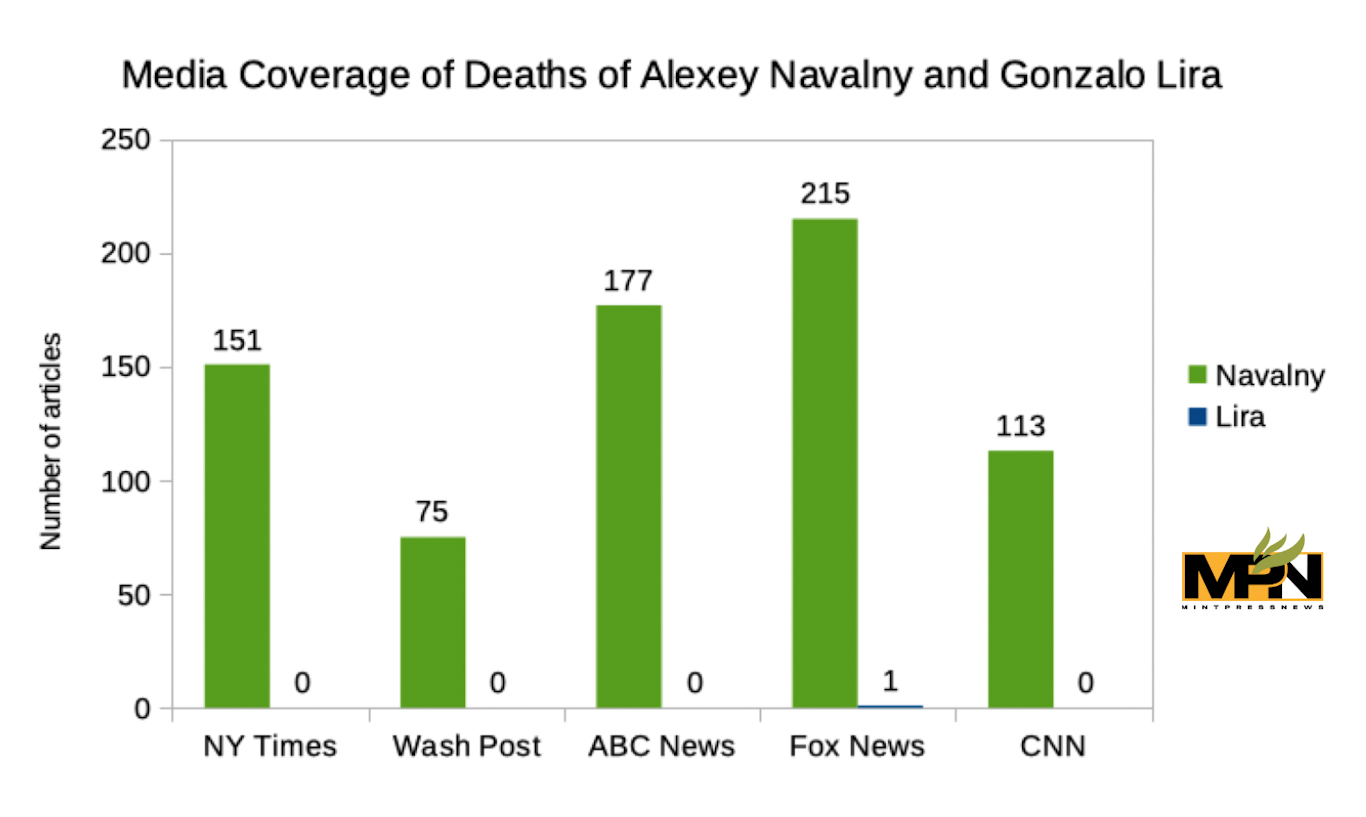
(MintPress News)
In total, the five outlets collectively ran 731 articles or segments that discussed or mentioned Navalny’s death, including 151 from the Times, 75 from the Post, 177 from ABC, 215 from Fox, and 113 from CNN. This means that each organization studied ran more than one piece per hour.
This media storm stands in stark contrast to the Lira case, where the entire coverage of his death [by the five outlets in the study] boiled down to a single Fox News article.
Moreover, the article in question described him as “spreading pro-Russian propaganda” in its headline, did not inform readers that there was anything suspicious about his death, and appeared to be doing its best to justify his treatment in the body of the article.
Aside from that, there was radio silence.
It is perhaps understandable that Navalny’s death was covered in much greater detail than Lira’s. Navalny was a political leader known across Russia and the world who died just weeks before the country’s presidential elections.
Yet Lira was far from unknown. News anchor Tucker Carlson, for example, devoted an entire show to his imprisonment, while high-profile figures like Twitter owner Elon Musk took up his cause.
State Department spokesperson Matthew Miller has been repeatedly asked about Lira’s case and has failed to offer concrete answers. As an American living in Ukraine who took a pro-Russian line on the invasion, Lira built up a following of hundreds of thousands of people across his social media platforms.
As an American citizen who died while in the custody of a government that the U.S. has provided with tens of billions of dollars in aid, it could be argued that Lira’s case is particularly noteworthy for an American audience and should be given special attention.
Moreover, Lira died more than one month before Navalny, meaning that the study compares more than 40 days of Lira coverage to just six days of coverage of Navalny’s death, making the disparity all the more glaring.
A Tale of Two Deaths
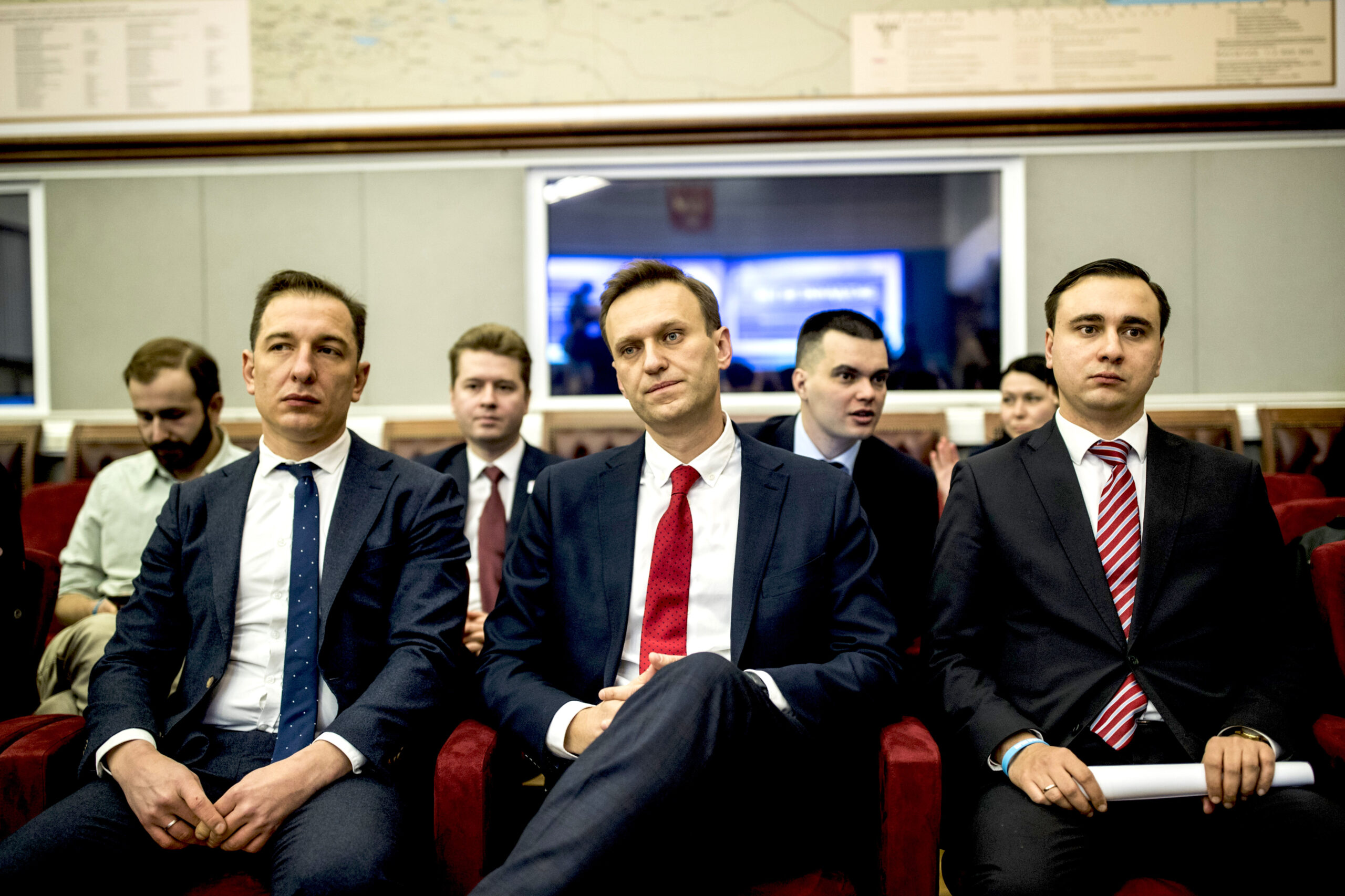
Navalny, center, at a meeting of the Central Election Commission in December 2017. (Evgeny Feldman, Wikimedia Commons, CC BY-SA 4.0)
Alexey Navalny was a lawyer, activist and the leader of the opposition Russia of the Future Party. A fierce critic of President Vladimir Putin, for many, especially in the West, he became a symbol of the struggle for human rights and democracy in Russia.
In 2021, he released a documentary film alleging that Putin was building an enormous $1 billion palace on the Black Sea for himself.
Navalny made many enemies and was allegedly poisoned in 2020. Although most in the West believe the Kremlin was behind the incident, this is not a commonly held view in Russia.
After returning from Germany for medical treatment in January 2021, he was incarcerated. On Feb. 16 he died at the notorious Polar Wolf penal camp in Russia’s far north.
“Vladimir Putin killed my husband,” Navalny’s wife, Yulia, said in a statement, adding, “The most important thing we can do for Alexey and for ourselves is to keep fighting more desperately and more fiercely than before.”
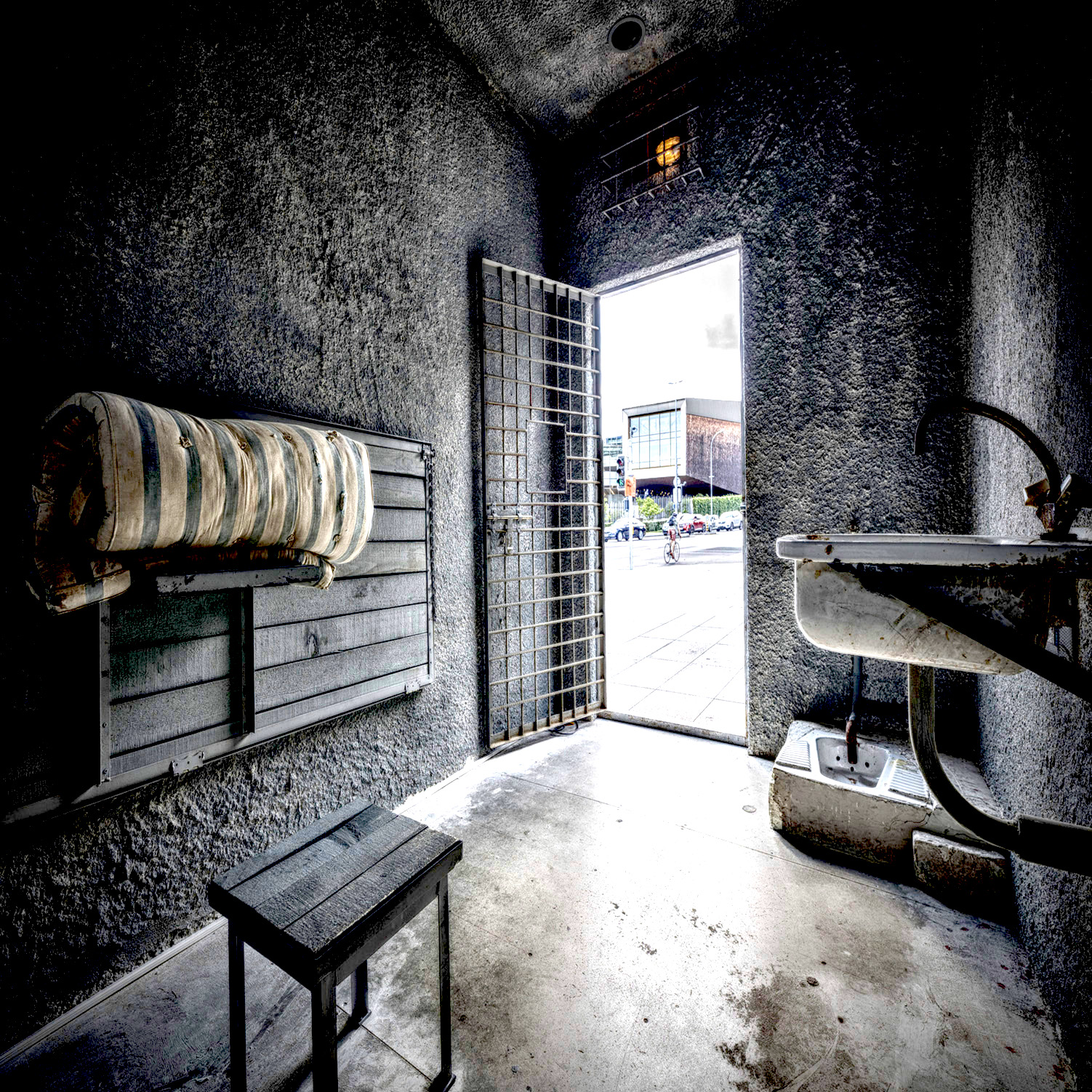
A temporary exhibit in Geneva, opposite the U.N., in June 2023 of a replica of a solitary confinement cell where Navalny was held several times. (Markus Schweizer, Wikimedia Commons, CC BY-SA 4.0)
Western leaders are largely of the same opinion. President Joe Biden said that, while the details are still unclear, “there is no doubt that the death of Navalny was a consequence of something Putin and his thugs did.”
Latvian President Edgars Rinkevics said that he was “brutally murdered by the Kremlin.” “That’s a fact, and that is something one should know about the true nature of Russia’s current regime,” he added.
Other politicians were more cautious. “Why this hurry to accuse someone?” Brazilian President Luiz Inácio Lula da Silva (Lula) asked. “If the death is under suspicion, we must first carry out an investigation to find out why this person died,” he said.
[Ukraine’s intelligence chief rejected the Russian assassination stories, saying Navalny died of natural causes, from a blood clot.]
Despite this and Lula’s warning, Western nations are already taking action against Russia. Both the U.S. and the U.K. have announced new rounds of “major sanctions” against Moscow, although it is far from clear to what extent previous sanctions actually hurt Russia.
Although he enjoyed a good reputation in the West, in his homeland, Navalny was a controversial character.
Earlier in his political career, he was a prominent leader in xenophobic, far-right marches. He also appeared in a political video where he described the Muslim people of the Northern Caucasus as an “infestation of cockroaches.”
While bugs can be killed with a slipper, in the case of human infestations, “I recommend a pistol,” he said before mimicking shooting one. According to a 2023 poll, just 9 percent of Russians held a positive view of him, compared to 57 percent who disapproved of his activities.
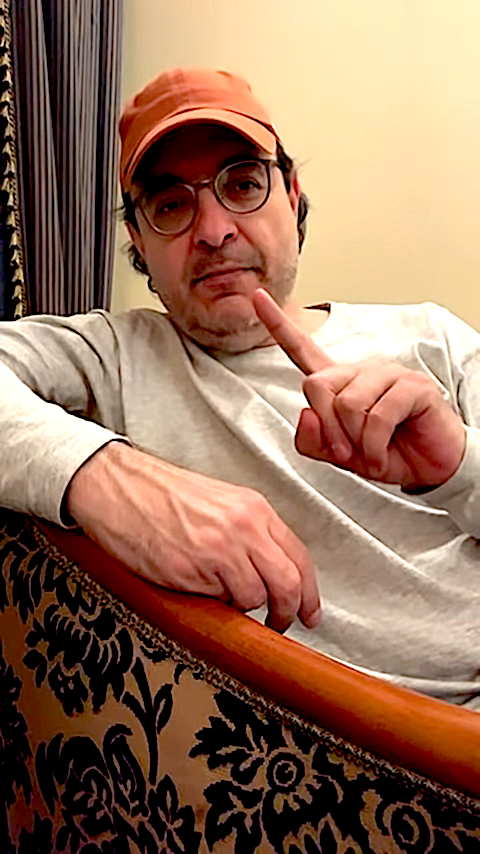
Gonzalo Lira in the Premier Palace Hotel, Kiev, Ukraine. February 2022. (Gonzalo Lira, Wikimedia Commons, CC BY-SA 4.0)
Lira, meanwhile, found success as an author and filmmaker earlier in life. He gained international notoriety, however, because of the 2022 Russian invasion.
As an American living in Ukraine at the time, his thoughts and perspectives traveled widely. He was far from a shrinking violet, often taking a strongly pro-Russian stance on the war, labeling Ukrainian President Volodymyr Zelensky a “cokehead,” and praising Putin’s move as “one of the most brilliant invasions in military history.”
It was this sort of content that angered both the Ukrainian government and many in the United States.
The Daily Beast, for instance, attacked him, describing him as a “pro-Putin shill,” and went so far as to contact the Ukrainian government to make them aware of Lira’s work.
Lira confirmed that, after The Daily Beast’s article, he was arrested by the Ukrainian secret police.
He was rearrested in May 2023 and would never see freedom again. Like with Navalny, Lira’s relatives claim he was badly mistreated in prison, and they blame the government for his death.
“I cannot accept the way my son has died. He was tortured, extorted, [held] incommunicado for 8 months and 11 days, and the U.S. Embassy did nothing to help my son,” Lira’s father wrote. “The responsibility of this tragedy is [with] the dictator Zelensky [and] with the concurrence of a senile American President, Joe Biden… My pain is unbearable. The world must know what is going on in Ukraine with that inhuman dictator Zelensky,” he added.
While Lira was undoubtedly far from neutral, neither was the Western press, which has largely taken a pro-Ukraine, anti-Russia stance. Like Navalny, Lira also had a controversial past.
Under the name “Coach Red Pill,” he made dating and relationship advice videos for the misogynistic manosphere community, where he reportedly offered sexist advice to men such as “never date a woman in her thirties.” [He also wrote in a Telegram post that Augusto Pinochet was the best leader Chile ever had. Lira was Chilean in origin.]
A Tireless Visionary vs. Human Trash

Demonstration around the Russian embassy in Berlin on Feb. 21, 2024, after the death of Alexey Navalny. (A.Savin, Wikimedia Commons, FAL)
Not only was the coverage of Navalny’s death extensive, but it also portrayed the deceased political activist in a highly positive light and gave ample space to figures claiming he was effectively assassinated by the Russian government.
The New York Times, for example, published an op-ed by Nadya Tolokonnikova of the anti-Putin punk band Pussy Riot, in which she said Navalny gave “hope and inspiration to people around the world.” “For many of us in Russia, Alexey was like an older brother or a father figure,” she said, adding:
“He helped me and millions of Russians realize that our country doesn’t have to belong to K.G.B. agents and the Kremlin’s henchmen. He gave us something else, too: a vision he called the ‘beautiful Russia of the future.’ This vision is immortal, unlike us humans. President Vladimir Putin may have silenced Alexey, who died last week. But no matter how hard he tries, Mr. Putin won’t be able to kill Alexey’s beautiful dream.”

Lira while filming Secuestro in 2007. (Guruguru, Wikimedia Commons, Public domain)
In contrast, the sparse coverage Lira’s death received in any outlet resembling a mainstream one was overwhelmingly negative. The Daily Beast, for example, [which was outside the study] ran with the headline “U.S. Finally Confirms American Dating Coach-Turned-Kremlin Shill Died in Ukraine.”
Its subheadline read, “Gonzalo Lira, a blogger who pushed Kremlin propaganda in Ukraine, died after apparently coming down with pneumonia,” meaning that there was no mention of his arrest or jailing in either title or subtitle.
Most media consumers (who do little more than browse headlines) would assume from that description that an awful person met a natural death. The article went on to tear down his credentials as a journalist (which The Daily Beast used only in “scare quotes” when discussing him) and accused him of making “hysterical” pronouncements about how the Ukrainian government was after him – even though he had just died in a Ukrainian prison.
This “good riddance to bad rubbish” framing encapsulated what little coverage of Lira’s death there was in the corporate press.
Worthy & Unworthy Victims
How to explain such an overwhelming disparity in coverage? That American media have so steadfastly ignored the death of Gonzalo Lira – an American citizen – cannot be boiled down to its lack of newsworthiness. Instead, Lira is a victim of the phenomenon that media scholars call worthy and unworthy victims.
In 1988, academics Edward Herman and Noam Chomsky developed the theory of worthy vs. unworthy victims in their book Manufacturing Consent. Together, they compared the media coverage of various violent actions around the world in order to ascertain why certain atrocities are ignored and why others become front-page news.
To Herman and Chomsky, whether the media would be interested in a violent story came down largely to two factors: who is the perpetrator, and who is the victim?
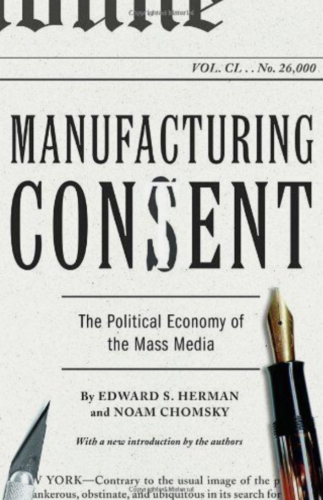 If the perpetrator is an enemy state or hostile actor, then media interest will be exponentially higher.
If the perpetrator is an enemy state or hostile actor, then media interest will be exponentially higher.
However, if the United States or its allies are at fault, then the media is likely to ignore the story. Likewise, if the victim is the U.S. or an ally, they will receive a great deal of attention.
However, the media have little interest in presenting enemy actors or states as victims, so those cases will be overlooked.
That is why Herman and Chomsky found, for example, that the coverage of one single murdered priest in an enemy nation (Communist Poland) drew more air time and column inches than the assassinations of over 100 churchmen in massacres committed by U.S.-backed groups in Latin America.
In short, your death will only be covered extensively if there is political capital to be made out of it – if the incident allows media to present enemy parties as barbarous and the U.S. or friendly parties as virtuous or worthy of sympathy.
Navalny was a Western-backed political figure attempting to unseat Putin from power. His death, therefore, checks both boxes of the Worthy Victims checklist, hence the 24-hour coverage across the press.
Lira, on the other hand, was a pro-Russian journalist and commentator who relentlessly critiqued and attacked the Ukrainian government. He is neither a sympathetic character in the corporate media’s eyes, nor does it make any political sense to present the Zelensky administration (whom the U.S. is steadfastly supporting) as responsible for killing an American citizen.
Hence, his story is dropped and does not pass through the filters to make it onto our screens and into public consciousness.
Thanks to @wikileaks for informing us that Navalny's organization, DA!, was funded by the US Government. No wonder they want to keep Assange in their gulag. pic.twitter.com/lyI0xSkzVe
— Daniel McAdams (@DanielLMcAdams) February 19, 2024
This study is certainly not arguing that Navalny’s death is not a newsworthy event, nor that Lira deserves equal or more coverage. Nor does it take any stance on Navalny or Lira as individuals or on the wider geopolitical tussle between the United States, Russia and Ukraine.
It merely uses these stories as case studies to show that what makes it as “news” in establishment media is not random but the result of an intensely politicized process. In other words, when it comes to deaths, murders or assassinations, the media will likely only cover yours if there is something to be gained from it.
Alan MacLeodis senior staff writer for MintPress News. After completing his PhD in 2017 he published two books: Bad News From Venezuela: Twenty Years of Fake News and Misreporting and Propaganda in the Information Age: Still Manufacturing Consent, as well as a number of academic articles. He has also contributed to FAIR.org, The Guardian, Salon, The Grayzone, Jacobin Magazine, and Common Dreams.
This article is from MPN.news, an award winning investigative newsroom. Sign up for their newsletter.
The views expressed in this article may or may not reflect those of Consortium News.

Chomsky also reminds us of the Korean airliner being shot down and getting 12 pages, if I remember correctly, in the NYT in one day.
But almost no coverage for a Libyan airliner shot down by Israel over the Sinai peninsula in February 1973. 108 dead.
I looked up Navalny back when he first gained media attention, and learned that he was jailed not for the corruption charge (reported at the time as fraud), but for skipping out on several million worth of court-mandated restitution.
Also, if the gov’t had cared to do away with him — he’d lived openly in Moscow for years, and an accident on the street would have avoided all this bad press. Even absent his health issues, I don’t buy that they’d deliberately kill him in the way that makes them look the worst.
The article was decently good IMHO, but could have been strengthened by contrasting not only the case of Lira, but also the case of Julian Assange, with that of Navalny. Both Assange & Lira are top-notch examples of the Herman-Chomsky concept of “worthy vs unworthy victims.” In fact, without intending to disparage Lira in any way, I’d say that of the two, Assange is probably the stronger example: he is an outright hero, brilliant and high-minded, who is literally being tortured to death in slow motion by the US government and its accomplices in the MSM. Some day in the future, people are going to look back on this period of the US Empire’s support for genocide and the persecution of Julian Assange, and what they see will carry the stench and shame of the Dred Scott Decision, or the worst of McCarthyism, or perhaps the persecution of Galileo.
Thank you for highlighting the lousy job the corporate media does in their role of providing us news. I have one objection. You described Navalny as a political leader. That’s totally false. He was obviously great at self promotion but he never held political office, he lost his only political race (for the mayor of Moscow, not some national office), and his party has never breached the minimum number of votes to get on the ballot without a petition. That’s hardly a leader.
I am also disappointed that you didn’t report the Russian medical examiner’s conclusion that he died of a blood clot. This is important since the whole Navalny-was-poisoned-by-the-Kremlin meme would never have made it even in a US court of law since the water bottle that allegedly contained the poison had no legitimate chain of custody since it wasn’t collected by Russian police.
Your larger point of worth and unworthy deaths is certainly valid, part of what plays into that is the validity of the news coverage and the press’ tendency to use slanted adjectives.
Navalny was also largely funded by US NGOs in Russia, and could reasonably be considered a US asset or agent. He served, and still does, a purpose – to fuel the anti-Russian propafganda machine, conveniently now to distract from the fact that Ukraine is losing so badly.
It is ironic, too, that the Ukrainians agree with the Russian stated cause of death!
Navalny was disliked by Ukraine intelligence because he supported annexation of Crimea. Crimea was attached to Ukraine in 1954, without a protest because (a) it did not matter to the Russian language population, very little changed in their lives (b) protest in Soviet Union was not easy, even at the peak of so-called thaw. Would Navalny oppose an annexation, it would be like carrying a sign “spit on me, I am a traitor”. But to nationalists in Ukraine authorities, supporting it is a total no-no, to a grotesque extend. E.g. banning a book of classic literature because preface was written by someone who supported annexation. Thus while Budanov may be right about blood clot, he is not impartial.
It is worth to note the story of Navalny’s body. Contrary to a hysterical announcement of the family, the body was as promptly given to the custody of his mother for burial as it was practical, given remote location of the prison. Yet, no details of “cruel death” emerged, they are merely axiomatic statements without any evidence. As we know, suspicious deaths or deaths from medical neglect are not rare in American prisons. Imagine coverage if Jeffery Epstein was an inconvenient person for Russian public figures. We would have Epstein Law with a big package of sanctions. Documentation on Epstein death has plenty of unexplained facts and contradictions, suicide watch claimed and ended, malfunctioning security camera, broken neck bone from slow compression that Epstein allegedly applied to his neck… In the meantime, while pro-American family got custody of Navalny’s body, we know no details whatsoever.
Thank You Alan
Thank you for highlighting the hypocrisy of Western mainstream media on display with the contrast of their narrative chasing reporting of Navalny and complete silence on Gonzalo Lira.
One note, Alexander Mercouris has reported that Navalny reached his peak popularity in 2013 when running in the election for Moscow’s mayor. He had a following but reportedly lost in a fair election to his opponent. Thereafter, his support dwindled. He was never any threat to Putin. He was arrested on corruption charges, not for threatening Russia or Putin, and was serving out his sentence. Logically, there is no reason for Putin to assassinate him. For what purpose? Simply neocon fever dreams and projections; of course, it’s what they would have done…
He died of blood clot which was confirmed by autopsy reports. John Helmer writes that following the investigation, the autopsy reports and Navalny’s body were released to his mother, Maria Pevchikh, who Navalny named in his will. After reviewing the evidence, she accepted the conclusions. So, that part of his family is not challenging the results. [hXXps://www.nakedcapitalism.com/2024/02/navalny-organization-splits-into-whites-and-reds-as-lies-multiply.html.
Even Kyrylo Budanov, the head of Ukraine’s military intelligence agency, has confirmed Navalny’s death was due to a blood clot rather than foul play [hXXps://news.antiwar.com/2024/02/26/ukraine-military-intelligence-chief-says-navalny-died-of-a-blood-clot/].
His wife however, who Navalny cut from his will after returning to Moscow, seems to want to keep the anti-Putin gravy train going and is fighting to take over his political organization which is funded by anti-Russian interests. As they say, follow the money…
Nonetheless, the bigger point about Western media hypocrisy is spot on. Even handed journalism? What bullshit. And this without even mentioning MSM’s tactic support for the persecution of Julian Assange.
Thank you. Your comment is spot on, and I appreciate Alan’s piece pointing out the hypocrisy and drastically uneven legacy media coverage of these two men’s deaths. I recently read a book (written before Navalny died) by Jacques Baud, a former Swiss intelligence officer with NATO during the Soviet period. The book, “The Navalny Case: Conspiracy to serve foreign policy,” (2023), shows that Navalny was a CIA/MI6 asset, was not popular or even widely known in Russia – despite U.S. propaganda to the contrary – and, as you point out, was never a threat to Putin. Baud discusses the lack of evidence to demonstrate that Navalny was poisoned with Novichok by Russia. I look forward to hearing Baud’s thoughts on the recent hysterical and unfounded claims that Putin had Navalny murdered.
Anne: Thanks very much for filling in the additional details.
Good critique of the US MSM bias towards a pro-US government stance. While there have no-doubt always been pro-government journalists like this, either by ideological reasons or careerist reasons, what is (IMO) unusual nowadays is the almost complete lack of skepticism on the part of the general public on this one-sidedness. From what I’ve read, a lot of Soviet citizens used-to privately smirk about the articles in Pravda because they weren’t credible due to their heavy pro-Soviet stance, but here in present-day US, it seems like ~98% of the citizenry take the MSM POVs as gospel. This in spite of the universally recognized fact that just ~20 years ago the US government & the MSM lied us into the Iraq War and all the death/destruction/cost that it entailed.
I find the author’s statement about what the study is not about quite pathetic. It nullifies his whole
point of view. E.g. that he is not saying that Lira deserves equal or more coverage.
Excellent! Keep on educating us! It helps ferreting out truth from propaganda – a discrimination desperately needed if the collective is to emerge out of its highly conditioned trance that perpetuates the illusion of the always innocent USA free and pure.
Russia is not my enemy. Navalny was a right-wing racist and corrupt as hell. Good riddance.
We have many right wing corrupt racists in the U.S. but we seem to elect them to office instead of getting rid of them. Choices, choices!!